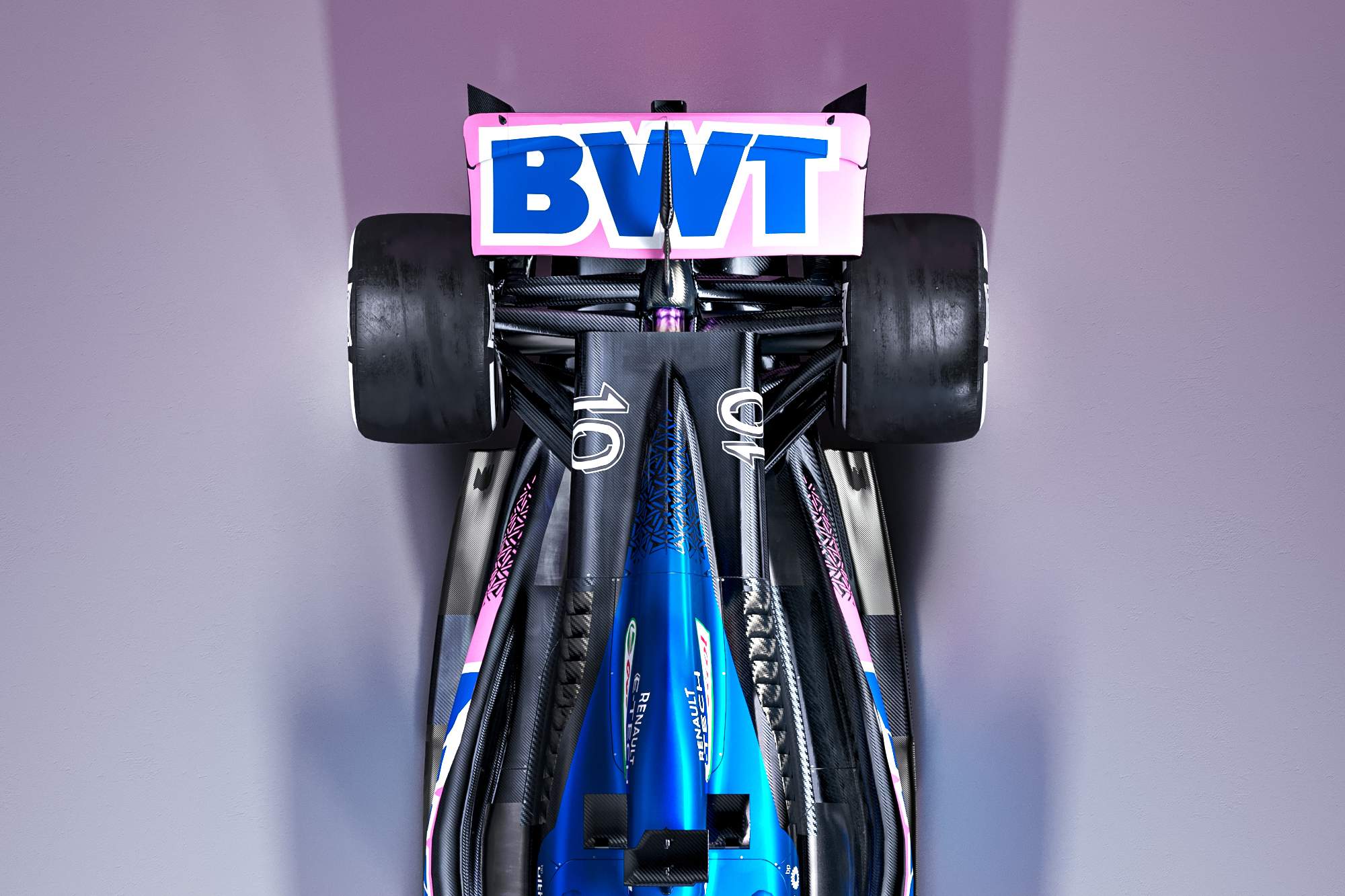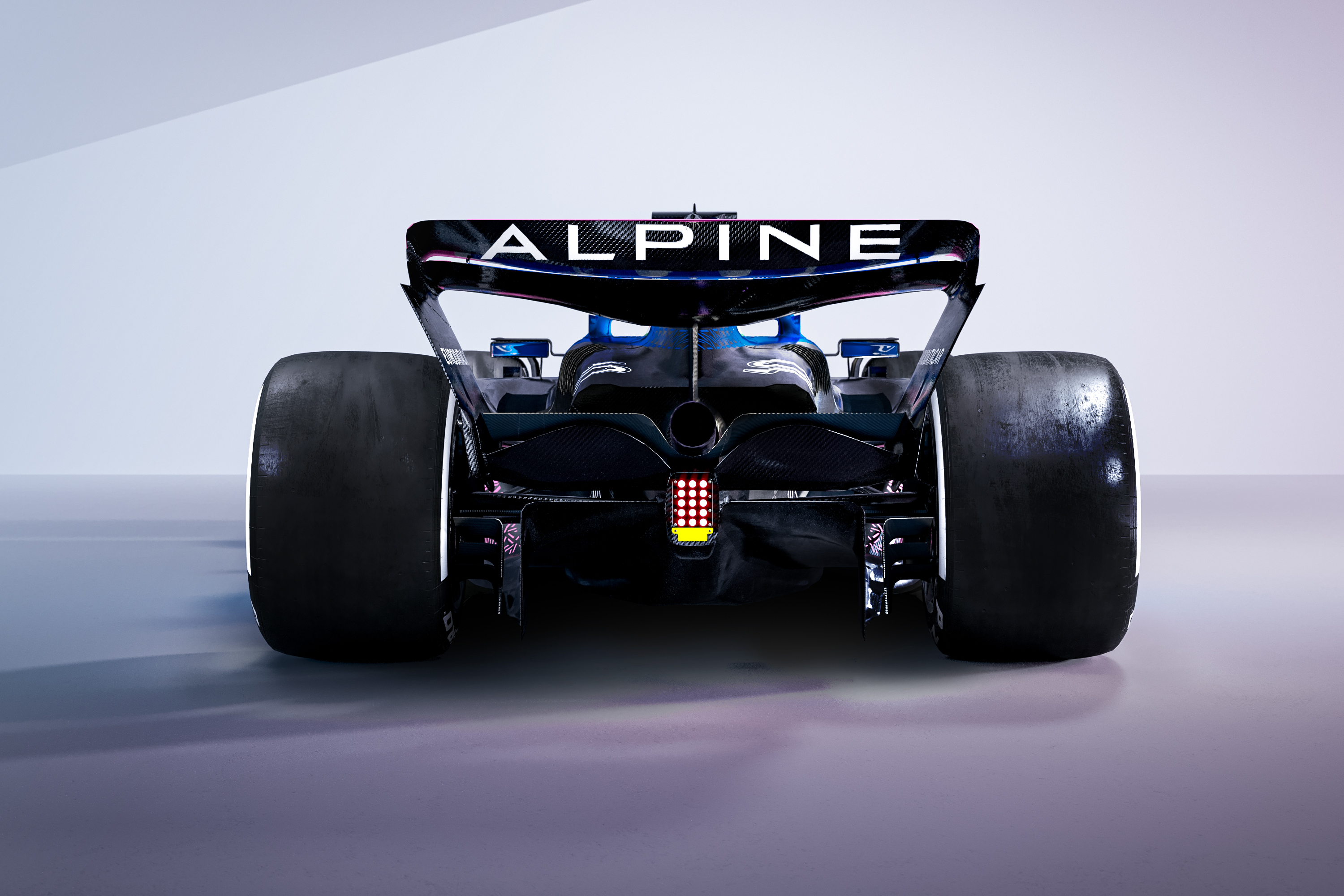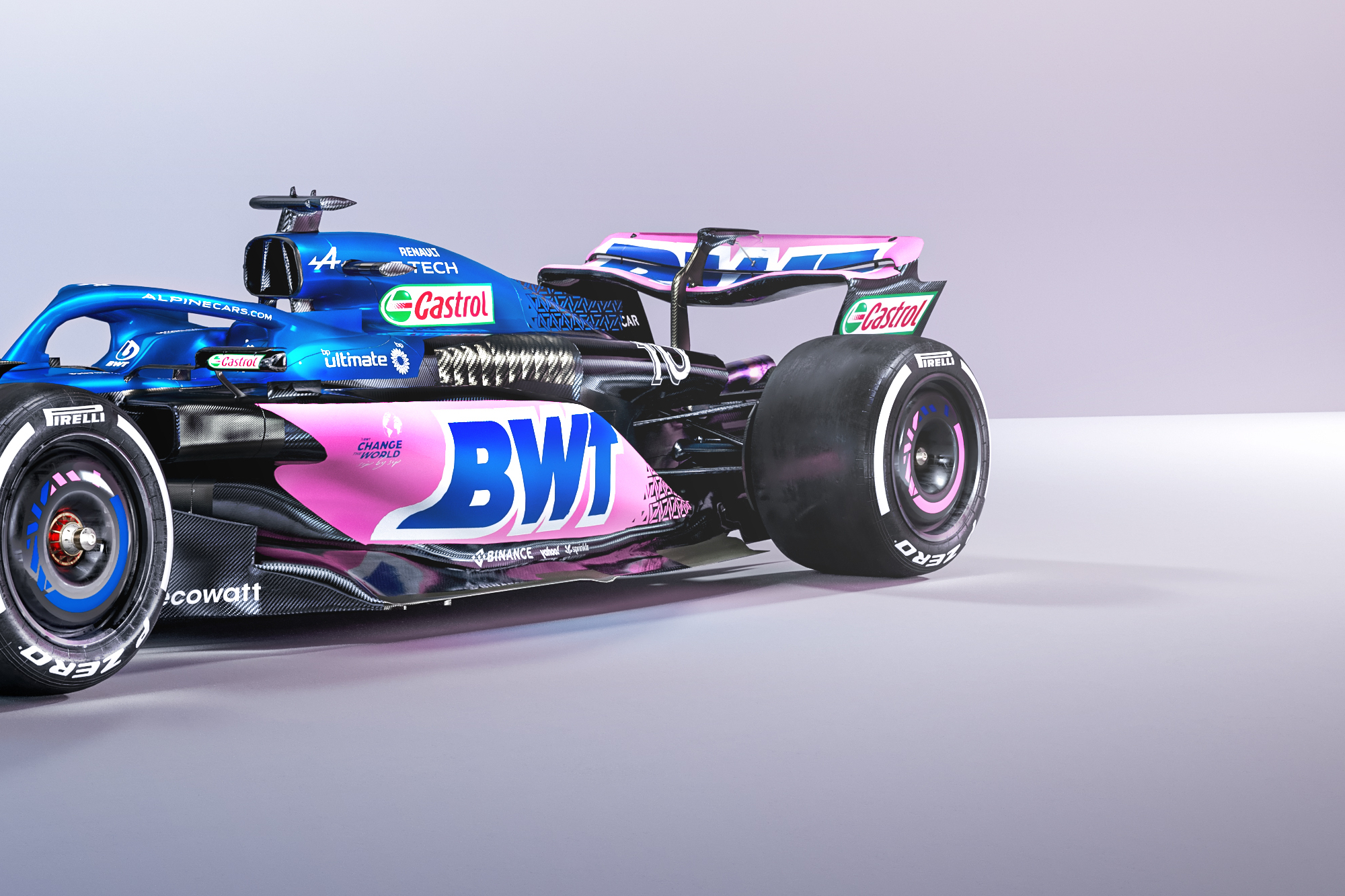Up Next

Alpine technical director Matt Harman has admitted he is “quite proud” of the work the team has done at the rear of its new Formula 1 car the A523.
Revised aerodynamics and suspension geometry were some of the key areas Harman highlighted at the launch of the new Alpine on Thursday night.
Prominent changes like switching from a pullrod rear suspension to pushrod are more visible but there are also developments we have not yet seen that Harman hinted would be noticed when the car runs in testing.
“I think we’ve done a good job of the rear of the car,” when asked by The Race what his favourite part of the A523 is.
“When you get into a bit more detail in Bahrain, you’ll see how extensive that is and we pushed it very hard.
“It’s challenged us in validation, challenged us in a few areas.

“We’ve got there now and I’m quite proud of this, it should be good for us.”
Harman said during the launch this rear suspension change was partly to control the airflow in a “much cleaner” way to the rear and it also aligned with “a little bit more complexity” in the inboard system to improve the mechanical set-up adjustments that can be made trackside.
But it also helped take weight out of the car, bringing it down below the limit so that in addition to not running heavy – Harman said it’s worth “35 milliseconds a kilo” – Alpine can now use ballast to impact the weight distribution.
Harman would not say how far below the weight limit the A523 is but hinted it is multiple kilograms as he claimed Alpine would have been happy with the planned 796kg limit that was initially intended for 2023 but was kept at 798kg over the winter.
“The good thing about these things is that we can spend it back into performance,” he said.

“We’ve got ideas, we’ve got a lot of things we can do with the car that will allow us to spend that mass.
“It’s just really important to not be where we last year because it does limit what we can do at the circuit, it limits what we can do on weight distribution, limits what toys we can put on the car to help with mechanical balance, things like that.”
Last year some teams made their cars heavier through the season with certain upgrades because new parts weren’t as light as the ones they replaced.
Asked by The Race if Alpine’s sub-798kg car weight means more freedom in terms of upgrades as there is less weight sensitivity, Harman said: “It does, it’s on two fronts.
“It’s that, it allows you to get parts to the car more quickly because you don’t need to engineer them to that level.
“It also allows you to accept a little bit of modularity in the car as well. You can accept a little bit more of a sub-optimal configuration to allow you to update things more quickly because you have better split lines, better interfaces between floors and bodywork.

“You can spend that mass for modularity which fundamentally is performance because if you can bring that upgrade an event sooner that’s just goodness.”
Alpine talked bullishly around its launch, aiming to cut the gap to the top three teams – having finished 342 points adrift of third in 2022 – and finish a more comfortable fourth in the constructors’ championship.
Harman said the team has a “full development budget” to help achieve that and “we’re looking to spend it all”.
Asked by The Race about the bold and public target of closing up to the biggest teams, Harman said: “You need to be realistic about these targets, to close up the gap which was quite a reasonable gap last year would be a fantastic achievement for us.
“To be able to capitalise on some mistakes or things from the other teams would be fantastic.
“To be able to do that we need to be a little bit closer than we were last year and I think that’s what we are trying to achieve.”





